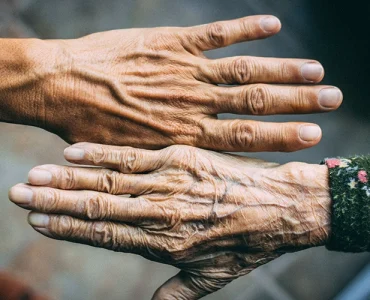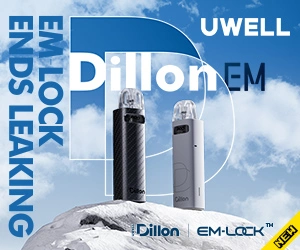Key Takeaways
- Secondhand vaping is the term used to describe when someone is exposed to vape aerosol from someone who is vaping nearby. It is often considered to be as harmful and undesirable as secondhand smoke.
- The dangers of secondhand smoke are well documented, but the evidence for the harm caused by secondhand vapor is less definitive. Secondhand vapor is unlikely to be proven to be as harmful as smoke.
- Just like actually vaping, certain groups may be more susceptible to the harm from secondhand vapor. This includes infants and children, pregnant women, and anyone with a pre-existing lung or breathing condition.
- While there are some toxins found in vape aerosols, they occur at significantly lower levels than in tobacco smoke. Research has shown that these levels are so low that they cannot be considered harmful to adults.
It is no secret that vaping has faced scrutiny from many since its inception. Despite the many differences from traditional smoking, it is often judged with a similar attitude. One example of these lumped judgements is how vaping is treated when it comes to secondhand health implications.
So, where did this all start?
Aside from the (few) parallels between smoking and vaping, the secondhand controversy was mostly sparked by Dr. Sandro Demaio when he took to Twitter one day.
“We’re seeing a threefold increase in vape toxicity notifications from secondhand vape exposure,” he Tweeted. “Kids as young as 12 months inhaling vapor from others around them. Including in cars, and even public spaces. Becoming poisoned from the highly addictive and toxic nicotine.”
As with everything vaping, this was met with both approval by anti-vaping groups and criticism from vape advocates for spreading misinformation. In fact, there was such backlash that Dr. Sandro Demaio has since removed the Tweet.
In this article, we take a look at secondhand vapor and compare it with secondhand smoke — and they’re not as similar as you might think.
What Is Secondhand Vaping?
Secondhand vaping is the term used to describe when someone, who is not vaping themselves, is inhaling vape aerosol from someone who is vaping nearby.
Of course, the amount of aerosol inhaled by that person changes based on a number of factors, which in turn impacts the level of effects that it may have on them.
The term “secondhand smoke” has been used in relation to cigarettes for many years now, due to the known harm caused by smoking. But given how new vaping is in comparison, it is a little trickier to determine the actual level of harm caused by secondhand vaping.
One thing is for certain, though. Secondhand vaping, just like actual vaping, holds far less risk than its traditional smoking counterpart.
Are There Risks from Exposure to Secondhand Vaping?
It is certainly a bit harder to determine the true risk levels of secondhand vaping when compared to the known issues with secondhand smoke. This is largely due to some unknowns when it comes to long-term effects.
This has led to groups on either side of the argument emerging, which at the very least can be seen as a good thing — there is no arguing that secondhand smoke is very dangerous.
Some would argue that a lack of the same concrete evidence found with secondhand smoking makes secondhand vaping at the very least anecdotally much less harmful. This rings doubly true when considering the hugely reduced health implications found from vaping when compared to traditional combustible cigarettes.
Important factors that can affect the level of secondhand vapor include:
- Proximity to the person not vaping
- Level of ventilation
- Amount of vape aerosol produced
- Nicotine concentration of vape liquid
While these factors play a role in the level of secondhand vapor, it remains much less harmful than secondhand smoke. This is in large part due to how quickly vape aerosol breaks down.
At-Risk Groups
Just like actually vaping, there are certain groups that may actually suffer more from secondhand vapor. To help reduce the stigma that we vapers face, as well as to be considerate, it helps to know these groups and to avoid vaping near them.
Pregnant Women
Nicotine exposure during pregnancy has been a known problem for many years now.
There is not yet a way to determine how much of this nicotine is available in secondhand vape aerosol for unborn infants, but when it comes to the severity of nicotine exposure when pregnant, the risk is not worth taking.
Infants and Children
Growing kids are also at risk when it comes to secondhand vapor. While it is not to the same degree as an unborn child, there is a potential risk of lung and heart disease if you are vaping nearby.
People With Lung Conditions
Of course, vaping in close proximity to anyone with lung issues like asthma is not a great idea. Like the other two at-risk groups, this is dependent on various factors.
The Differences Between Secondhand Vapor and Secondhand Smoke

Because of the relationship between smoking and vaping, the two are often unfairly grouped together. Whether this is from pure ignorance or some other agenda, it does not help promote the benefits of vaping as a tool for ex-smokers.
Secondhand Smoke
Along with the huge number of health implications from traditional cigarette smoking, secondhand smoke has been on the radar of medical researchers for years.
Groups like the American Lung Association have attributed over 43,000 deaths from secondhand smoke every single year.
According to the U.S. Surgeon General, approximately 2.5 million people died from secondhand smoking in the 50-year period since 1964.
Secondhand smoke also affects the unborn fetus of smokers while they are pregnant. This can lead to premature birth, birth defects, and even sudden infant death syndrome (SIDS).
Secondhand Vapor
It is hard to deny that there is a huge amount of demonization towards the vaping industry, so it is important to clarify things as best as possible.
While there are some toxins found in vape aerosols, these are significantly lower than what is found in cigarettes. Researchers like Professor Hajek, director of the Tobacco Dependence Research Unit at the Queen Mary University of London, makes a point that these levels are so low that they cannot be considered harmful.
“E-cigarettes release no chemicals into the environment themselves, only what users exhale, and such exhalation has so far not been shown to generate any toxicants at levels that could conceivably affect the health of bystanders,” says Professor Hajek,
Furthermore, research has concluded that vape aerosols break down within seconds, even indoors. This massively reduces the potential for secondhand vaping to occur before any potential risks can come into play.
At present, there are not even any definitive figures that can pinpoint deaths from secondhand vaping, or even serious health issues.
What’s in Secondhand Vapor vs Secondhand Smoke?
In terms of secondhand vapor and secondhand smoke, the most important factor is arguably what is released from the body of the person smoking or vaping.
Comparing these byproducts can give huge insight into how secondhand smoke and secondhand vapor differ from one another. These are some of the most prominent byproducts found in the exhalation of vapers and smokers respectively.
Particles in Vapor
- Nicotine
- Ultrafine particles
- Very low levels of toxins*
Particles in Cigarette Smoke
- Nicotine
- Formaldehyde
- Benzene
- Vinyl chloride
- Arsenic ammonia
- Hydrogen cyanide
To the layman, just a glance at the difference in the chemicals a person is exposed to through secondhand contact should be enough to highlight just how much safer secondhand vaping is.
Again, going back to the toxins found in vape aerosol, these are believed to be in such low doses they can almost be dismissed. To further this, these aerosols are typically broken down before they can even be inhaled by any bystanders.
To Wrap Up
Because of the parallels between smoking and vaping, many have considered vaping to have the same potential for secondhand harm as smoking.
This is likely the result of a combination of the known health implications of secondhand smoking and the misinformation/lack of knowledge when it comes to the general public’s view of vaping.
Thankfully, the secondhand risk of vaping is massively reduced because of a variety of key differences between smoking and vaping.
The mystery of secondhand vaping may very well be just another case of misinformation.









